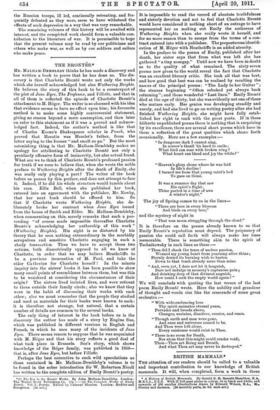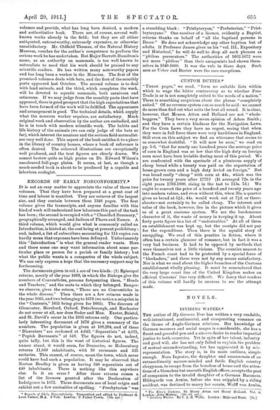BRITISH MAMMALS.* THE attention of our readers should be called
to a valuable and important contribution to our knowledge of British mammals. It will, when completed, form a work in three
* A History of British Mammals. By Gerald E. H. Barrett-Hamilton, B.A. M.RI.A., F.Z.S With 27 full-page plates in colour, 54 in black and white, and upwards of 260. smaller illustrations drawn by Edward Wilson, B.A., )L. Gurney and Jackson. [24 monthly parts, 2s. M. each wt.)
volumes and provide, what has long been desired, a modern and authoritative book. There are, of course, several well- known works already in the field; but they are all either antiquated, untrustworthy, extremely expensive, or otherwise unsatisfactory. Mr. Oldfield Thomas, of the Natural History Museum, vouches for the author's competence to perform the serious work he has undertaken. But Major Barrett-Hamilton's name, as an authority on mammals, is too well known to naturalists to need that his work should be praised to any scientific readers. He has written many noteworthy papers and has long been a worker in the Museum. The first of the promised volumes deals with bats, and the first of the monthly parts appeared last October. The second volume is to deal with land animals, and the third, which completes the work, will be devoted to aquatic mammals, both carnivora and cetaceans. If we may judge from the monthly parts that have appeared, there is good.prospect that the high expectations that have been formed of the work will be fulfilled. The appearance and arrangement is good. The technical details, which supply what the museum worker requires, are satisfactory. Much original work and observation by the author are embodied, and he is in touch with modern scientific work. The habits and life history of the animals (we can only judge of the bats so far), which interest the amateur and the serious field-naturalist, are very well done. This aspect of the book entitles it to a place in the library of country houses, where a hook of reference is often desired. The coloured illustrations are exceptionally well produced, and the text figures are clearly drawn. We cannot bestow quite so high praise on Dr. Edward Wilson's uncoloured full-page plates. It seems, at last, as though a much-needed book is about to be produced by a capable and laborious zoologist.



























































 Previous page
Previous page